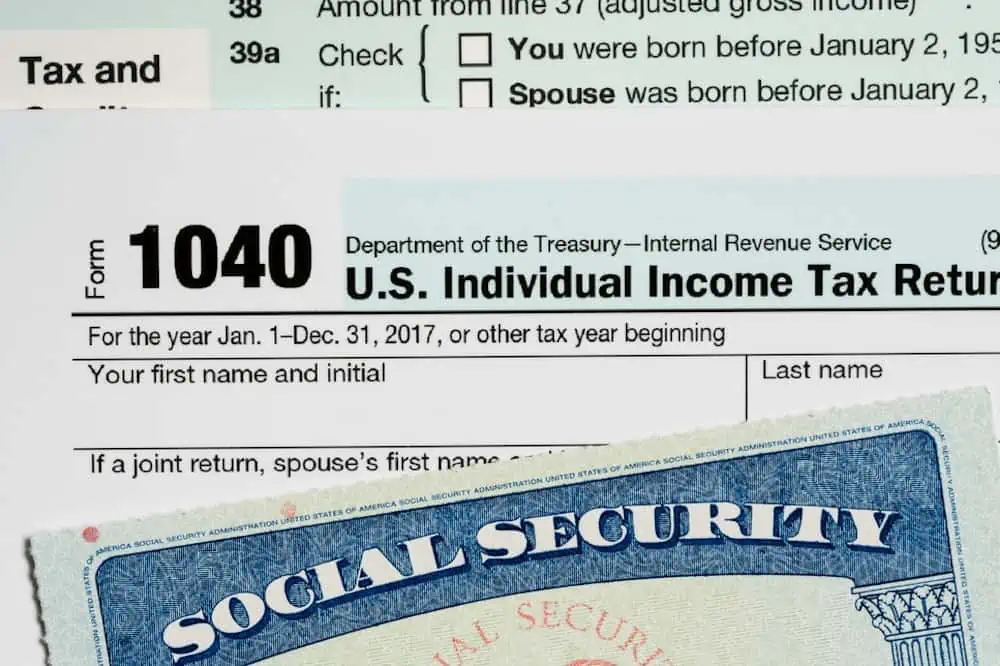Medicare is a vital social safety net for some of America’s most vulnerable citizens. The program provides health care coverage for everything from routine medical treatment to hospital visits to prescriptions, and it’s usually a much more affordable option than private insurance.
Most of us don’t currently use it, but if you don’t already, you very likely will at some point.
Medicare does have one glaring issue, however: It’s a complex system, leading many people to complain that it’s confusing and difficult to understand.
If you want to become more familiar with Medicare, then, read on. I’ll discuss how Medicare works, the various “types” of Medicare, costs, eligibility rules, and more. This information should help anyone who is planning out their retirement and wants to become more familiar with their health care responsibilities.
Featured Financial Products
Table of Contents
What Is Medicare?

The majority of Americans get their health insurance through employer-sponsored plans. But it’s a slim majority—one that’s primarily made up of working-age, middle- to upper-income Americans without disabilities. Americans also receive insurance through programs such as Medicaid, TRICARE, and Veterans Affairs.
However, roughly 20% of the population—some 66 million or so of us—are insured through Medicare.
Medicare is a federal health insurance system for individuals who are at least 65 years old or have disabilities or certain chronic conditions.
The program is broken out into “Parts” that provide different types of coverage—for instance, there’s a Part for hospital insurance, a Part for more common medical insurance, a Part for prescription coverage, and so on.
Medicare tends to be more cost-efficient than what you could get from the private markets. However, unlike private insurance, Medicare doesn’t offer family plans—it’s for individuals only.
How Does Medicare Work?

Medicare is primarily funded by a combination of taxes that you and your employer(s) pay throughout your life, though you also might have to pay some premiums once you enroll.
According to health policy nonprofit KFF, Medicare’s funding breakdown looks like this:
— General revenues (46%): Income taxes, excise taxes, estate taxes, and other taxes and fees
— Payroll tax revenues (34%): If you’re a W-2 employee, employers will withhold a variety of taxes from your check. Among these are Social Security and Medicare taxes. Employers are also required to pay half of these two taxes. If you’re a 1099 worker, such as a contractor or freelancer, you must pay the full amount of Social Security and Medicare taxes (self-employment taxes) in your quarterly estimated tax payments, though you’re generally allowed to deduct this half as an expense on your tax return.)
— Premiums (15%): Depending on which Medicare Part (or Parts) you enroll in, you may have to pay some premiums. These premiums are paid either through normal billing or having the amount deducted from your Social Security check.
— Other (5%): Taxes on Social Security benefits, payments from states, and interest.
Which Medicare Parts you enroll in will determine the types of coverage you have and the premiums you’ll pay. That said, like with private health insurance, you’ll still have to deal with deductibles, coinsurance, and out-of-pocket costs. (Despite these expenses, Medicare remains a more cost-effective health insurance option than most private policies.)
A major benefit of Medicare? Almost all providers accept it, making it easier to avoid working with out-of-network doctors, which can make receiving care more expensive.
Related: Retired But Too Young for Medicare? Health Insurance for Early Retirees
What Are the Types of Medicare Coverage?

Medicare is made up of different “Parts” that cover different health care expenses. These Parts are referred to as Part A, Part B, Part C, and Part D.
Some of these Parts work in concert with one another, though they’re occasionally incompatible with one another. And while Medicare itself is a government program, a couple of these Parts involve private insurers.
Below, I’ll outline what each of these Parts cover, as well as what to expect in costs, including premiums, deductibles, and coinsurance.
Related: The Best Retirement Plans for 2025 [Workplace + Individual]
Medicare Parts A and B (Original Medicare)

Medicare Part A and Part B are two distinct Parts with their own completely separate areas of coverage and premiums. However, they’re commonly discussed as a pair—indeed, they’re jointly referred to as “Original Medicare” because they were the program’s original components when they were signed into law in 1965.
These complementary plans cover different health care needs. Together, they cover costs ranging from physicians’ services and hospital stays to skilled nursing facilities and medical equipment.
Medicare Part A (hospital insurance)

Medicare Part A pays for the most critical and urgent aspects of health care, including (but not limited to):
— hospice centers
— inpatient hospitals
— inpatient rehabilitation centers/clinics
— select health care needs delivered in-home
— skilled nursing facilities
The vast majority of Americans don’t need to pay Part A health insurance premiums. Premiums for the few people who must pay for Part A are either $287 or $505 per month in 2024. (See the section about eligibility requirements, which is later in this story, to learn more about who pays, and how much.)
Deductibles and coinsurance
Once Medicare Part A users are admitted to a hospital or other acute care facility, the benefit period begins and continues until they’ve been discharged for 60 days. Medicare Part A’s inpatient hospital deductible covers a beneficiary’s costs for the first 60 days of care in a benefit period. For 2024, this deductible was set at $1,632.
What if you need a longer stay? For days 61 through 90, beneficiaries are expected to pay coinsurance of $408 per day. For stays above 90 days, individuals can choose to pay the entire cost themselves or draw from a pool of 60 additional “lifetime reserve days.” Lifetime reserve days aren’t free though. Those days still require a coinsurance payment of $816 per day. Plus, lifetime reserve days don’t reaccumulate—once you use them, you never get more.
Related: Best Vanguard Funds to Hold in an HSA
Featured Financial Products
Medicare Part B (medical insurance)

Medicare Part B handles some of the services Part A doesn’t cover, such as outpatient hospital visits, physicians’ services, some home health services, and durable medical equipment.
Every year, Part B premiums, deductibles, and coinsurance rates are determined according to provisions of the Social Security Act. For most people, the government covers 75% of the Part B premium, and the beneficiary pays the remaining 25%.
In 2024, the standard monthly Medicare Part B premium that plan holders pay was set at $174.70 for anyone with a modified adjusted gross income (MAGI) of $103,000 or less. (Based on income listed on your tax return from two years prior.)
However, above that threshold, an income-related monthly adjustment amount (IRMAA) kicks in—depending on your IRMAA, you could be responsible for as much as 85%. In 2024, the monthly premium maxes out at $594, which is the cost for people with a MAGI of at least $500,000.
Few people are subject to IRMAA, however; currently, just 7% of Plan B enrollees pay a higher premium.
Premiums are different for people with immunosuppressive drug coverage (Medicare Part B-ID). Part B-ID premiums start at $103 for a beneficiary with a MAGI of $103,000 or less, and max out at $515 for a beneficiary with a MAGI of $500,000 or more.
Deductibles and coinsurance
Usually, coinsurance is 20% of the cost for every Medicare-covered service or item after reaching the deductible.
For 2024, the annual deductible for all Medicare Part B beneficiaries, regardless of income, was set at $240. For example, if you hadn’t used up any of your deductible yet and then had a health care cost of $1,000, you would owe your deductible ($240) and then 20% of the remaining $760 ($152) for a total of $392. Had your deductible already run out, you would owe 20% of $1,000, meaning $200.
Related: 15 Alarming Gen X Retirement Statistics
Medicare Part C (Medicare Advantage)

Those who prefer an alternative to Original Medicare can consider Medicare Part C.
Part C is a plan provided by a private insurer that covers the services you get from both Part A and Part B, and they’ll also usually include prescription drug coverage (Part D).
The upside is you can choose among several plans with different pricing and benefits. However, you typically need to see doctors within the plan.
People with Medicare Advantage pay the plan’s premium as well as Part B’s monthly premium. But keep in mind that some Part C plans might have a $0 premium and could even help cover some or all of the cost of the Part B premium. According to data from the Centers for Medicare & Medicaid Services (CMS), the projected 2024 average premium for Medicare Advantage plans was $18.50 per month.
People usually either get Parts A and B or Part C. It’s a nearly even split for which people choose. According to independent polling source KFF, as of 2024, about 54% of eligible Medicare beneficiaries were enrolled in Medicare Advantage plans.
Lastly, please note that Medicare Advantage users can’t buy Medigap (more on this coming up).
Deductibles and coinsurance
Medicare Advantage deductibles vary depending on the plan you choose and could land anywhere from $0 to more than $1,000. Coinsurance rates are plan-dependent as well.
Related: Best Schwab Funds to Hold in an HSA
Medicare Part D (prescription drug coverage)

Medicare Part D is optional coverage, provided by private insurance, that helps pay for self-administered prescription drugs.
While monthly premiums are largely based on whatever the private insurer sets, Part D also has IRMAA, in the form of an additional set dollar amount (which varies based on MAGI listed on your tax return from two years prior) paid on top of your plan’s premium. And like with Part B, few Part D enrollees are subject to IRMAA—just 8% currently.
For 2024, there is no income-related monthly adjustment for the following:
— Individuals with a MAGI of $103,000 or less
— Couples filing jointly with a MAGI of $206,000 or less
For higher earners, the income-related monthly adjustment increases as people exceed certain thresholds. As a for instance, there would be a $12.90 adjustment for:
— Individuals with a MAGI of more than $103,000 up to $129,000
— Couples filing jointly with a MAGI of more than $206,000 up to $258,000
It maxes out at an adjustment of $81 for the following:
— Individuals with a MAGI of $500,000 or more
— Couples filing jointly with a MAGI of $750,0000 or more
Based on CMS projections, the 2024 Part D average total monthly premium will be $55.50.
Premiums are paid directly to Medicare or taken from Social Security checks. However, adjustments are only deducted from one’s Social Security check. (Note: If the monthly amount exceeds the amount of your check, or you don’t receive Social Security, Railroad Retirement, or Office of Personnel Management benefits, expect a bill from Medicare.)
You can’t enroll in both Part C and Part D. However, Part C plans usually include prescription drug coverage. So, Medicare recipients who want full coverage will either enroll in Parts A, B, and D, or Part C.
Deductibles and coinsurance
Until the end of 2024, Medicare Part D plans have a coverage gap nicknamed the “donut hole.”
The donut hole begins after a participant and their drug plan have spent $5,030 on covered drugs in 2024. While in the coverage gap, a person pays no more than 25% of the cost for covered brand-name prescription drugs, but nearly the full price of the drug counts toward one’s out-of-pocket spending.
For generic drugs in 2024, Part D covers 75% of the price and the user pays 25%. When it comes to generic drugs, only the amount you pay counts toward exiting the donut hole. Once someone’s out-of-pocket spending reaches $8,000, they can off ramp the coverage gap and get catastrophic coverage. Then, you don’t have to pay for covered drugs for the remainder of the year.
Remember, this system only lasts until the end of 2024. Starting in 2025, there is a $2,000 cap on covered Part D drugs as a result of the Inflation Reduction Act (aka prescription drug law). Once someone’s out-of-pocket spending on covered drugs reaches that cap, they automatically get catastrophic coverage and don’t have to pay anything out-of-pocket for covered Part D drugs for the remainder of the calendar year. The cap will be indexed to rise every year after 2025 based on the rate of growth in per capita Part D costs.
Related: Best Fidelity Funds to Hold in an HSA
Featured Financial Products
What Is Medigap Coverage?

Individuals with Original Medicare have the option to purchase Medicare Supplement Insurance (Medigap). A Medigap policy could reduce how much you have to pay for services.
Medigap is another Medicare program where plans are provided by private insurers. It helps to cover out-of-pocket expenses from Original Medicare, including copayments, coinsurance, and deductibles, and it works with any hospital or doctor that accepts Medicare.
What exactly is covered depends on which plan you get. However, while this is offered by private insurance, the plans are standardized. Currently, Medigap has 10 different plans, and the coverage you receive under each plan is the same, no matter what provider you get the plan through. A few examples:
— All plans offer Part A coinsurance and hospital costs up to an additional 365 days after Medicare benefits are used.
— However, Plan B benefits include 100% Part A deductible coverage, while Plan A does not.
— But while Plan B covers 100% of only Part A deductibles, Plan C covers 100% of both Part A and B deductibles.
You can compare Medigap plans on Medicare.gov.
The average 2024 premium for Medigap coverage is $137, but the cost varies significantly by state. The price usually lands between $80 to $300 per month.
You cannot use Medigap in conjunction with Medicare Advantage plans.
Related: Say Goodbye! These 10 Things Are Fading Out of Existence
Medicare Eligibility Requirements

You can qualify for Medicare in three ways: turn 65, have a disability, or have one of a few specific chronic conditions. But you also have to meet certain basic eligibility requirements.
This particular aspect of Medicare is even more complex than most. The information that follows is largely from government websites (namely Medicare.gov and SSA.gov), but we also reached out to a Medicare representative to fill in certain gaps and clarify vague or inconsistent info.
General requirements
To qualify for Medicare in any way, shape, or form, you must be:
— A U.S. citizen.
— A lawful permanent resident (LPR, aka a green card holder) who has demonstrated permanent, continuous residence in the U.S. for at least five years before the month in which you enroll.
Age-based Medicare Part A requirements
Most Americans qualify for Medicare by reaching age 65. And most 65-year-olds who qualify for Medicare’s most rudimentary segment, Part A, typically receive this coverage premium-free. But to do so, they must either:
Have at least 40 Medicare work credits. For 2024, you must make at least $1,730 in “covered earnings” (earnings subject to Medicare taxation) in a quarter to receive a work credit. You can accumulate a maximum of four work credits per year, at $6,920 in total earnings. But you can earn them at a much faster rate than once per quarter. For instance, if you made $6,920 in covered earnings during your first month of work, you would earn all four credits for the year; or
Have a spouse with at least 40 Medicare work credits who is at least 62 years of age.
Disability-based Medicare Part A requirements
Some people will qualify for Medicare by either having a disability or having a specific chronic condition. Again, most of these people will qualify for premium-free Part A as long as they:
— Pass the recent work test.
Age 31+: Have at least 20 Medicare work credits in the 10-year period immediately before your disability began.
Age 24-31: Have half the years’ worth of credits as the number of years between your age and when your disability began. (Example: If you develop a disability at age 29, you would need four years’ worth of work credits—so, 16 credits—across the past eight years.)
Younger than 24: Have at least six work credits in the three-year period before you developed your disability.
— Pass the duration work test.
— You will need to have accumulated a certain number of work credits before you developed your disability. Unlike the recent work test, these work credits can have been earned at any time. The Social Security Administration has a detailed table showing how many work credits you would need based on a wide range of possible ages one might have developed a disability.
If you qualify for Medicare based on a disability, you also will need to have received Social Security or Railroad Retirement Board benefits for 24 months before you can begin collecting Medicare benefits.
However, if you have amyotrophic lateral sclerosis (ALS, also known as Lou Gehrig’s disease), or you have end-stage renal disease (ESRD) and meet certain requirements, the waiting period will be waived.
Qualifying for Part A, but with premiums
Certain people can qualify for Part A but still have to pay a premium, including:
— People age 65 and older who have at least 30 work credits, or a spouse who is at least age 62 with at least 30 credits. (They’ll pay a reduced monthly premium, which is $278 in 2024.)
— People age 65 and older who have fewer than 30 work credits, or a spouse who is at least age 62 with fewer than 30 credits. (They’ll pay the full monthly premium, which is $505 in 2024.)
— People with disabilities who have exhausted all other forms of entitlement. (They’ll pay the full monthly premium of $505.)
Parts B, C, and D
Generally speaking, if you qualify for Part A, you qualify for Part B.
— If you qualify for (and enroll in) premium-free Part A, you can choose whether or not to enroll in Part B.
— If you qualify for Part A but must pay a premium, you can choose to enroll in just Part B, or enroll in both Parts A and B. But you cannot purchase Part A without Part B.
To qualify for Part C, you must be enrolled in Parts A and B and live within your plan’s service area.
To qualify for Part D, you must be enrolled in Part A or Part B.
Featured Financial Products
When Do You Enroll in Medicare?

Age-Based Medicare
The most common way to become eligible for Medicare is reaching 65 years old. If that applies to you, there are several enrollment periods you need to know about:
Initial Enrollment Period (IEP)
As previously mentioned, one of the ways to become eligible for Medicare is reaching 65 years old.
Your Initial Enrollment Period (IEP) starts three months before you turn 65 and ends three months after the month you turn 65, giving you seven months to enroll. For example, if your birthday is June 15, your IEP starts on March 1 and ends on September 30 in the year you turn 65.
However, if your birthday falls on the first of the month, it’s slightly different—your IEP begins four months before you turn 65 and ends two months after the month you turn 65. In other words, while you still have seven months to enroll, the time frame starts and ends earlier.
Medicare coverage always begins on the first of the month:
— Premium-free Part A coverage starts the month you turn 65.
Exception: If your birthday is on the first of the month, coverage will begin during the month before you turn 65.
— If you sign up for premium Part A and/or Part B before you turn 65, coverage begins during the month in which you turn 65.
— If you sign up for premium Part A and/or Part B during the month in which you turn 65, or during the three months after, coverage begins the following month.
The IEP also applies for Medicare Parts C and D. But note that if you sign up for a Part C during this time, you’re allowed to drop it at any point during the next 12 months and switch to Original Medicare without penalty.
If you don’t enroll for Medicare during the IEP, you’ll need to sign up during the general or special enrollment periods. If you sign up during a GEP, you’ll often have to pay a late enrollment penalty, which impacts your monthly premiums. This is a temporary penalty for Part A, but typically a lifetime penalty for Parts B and D.
General Enrollment Period (GEP)
The General Enrollment Period (GEP) for Medicare Part A and Part B is from Jan. 1 through March 31 every year. If you sign up during the GEP, your coverage begins the month after you sign up. For example, if you signed up in February, your coverage would begin in March.
If you have Medicare Part A, and you enroll in Part B for the first time during the GEP, that triggers a two-month Special Enrollment Period (SEP) in which you can enroll in Part C or Part D. If you don’t have Part A and you enroll in Part B, that triggers a two-month SEP in which you can enroll in Part D. (Remember: You must be enrolled in Parts A and B to enroll in Part C.)
Open Enrollment Period (OEP)
The Open Enrollment Period (OEP) is for Parts C and D (not Original Medicare). It runs from Oct. 15 to Dec. 7 each year. During this period, people can enroll in, change, or drop Medicare Part C and Part D plans. Any changes made during the OEP typically take effect on Jan. 1 of the following year.
Medicare Advantage Open Enrollment Period
The Medicare Advantage Open Enrollment Period is from Jan. 1 to March 31. If you are enrolled in a Medicare Advantage plan, you can use this period to make changes from your existing plan, or switch to Original Medicare (and, if you want, enroll in Part D).
Special Enrollment Period (SEP)
A Special Enrollment Period (SEP) is a one-time enrollment period triggered by any number of events, including (but not limited to):
— Dropping out of an employer plan
— Losing Medicaid coverage
— Being released from incarceration
Enrolling during one of these periods typically exempts you from any penalties.
For instance, let’s say you had health insurance through your job or your spouse’s job—you have eight months from either the end of your health care coverage or the end of your employment (whichever happens first) to enroll without being subject to a penalty.
When people sign up for Medicare Part A or Part B during an SEP, they typically have two months to join a Part C or Part D plan. Coverage then begins the first day of the month after the plan gets your request to join.
In some situations, you might qualify for an additional Medicare Advantage Special Enrollment Period. The main ways you might become eligible for a Part C Special Enrollment Period are as follows:
— You move to a new location.
— You lose current health care coverage.
— You get an opportunity to get other coverage.
— Your plan’s contract with Medicare changes.
Disability-Based Medicare

The enrollment periods for disability-based Medicare are different from that of age-based Medicare.
Initial Enrollment Period (IEP)
The Initial Enrollment Period (IEP) for people who qualify for Medicare because of a disability starts three months before their 25th month of disability payments and ends three months after.
People with disabilities can apply for Social Security Disability benefits. Once a beneficiary is deemed disabled, there is a five-month waiting period before they start collecting Social Security Disability benefits. Anyone who has been receiving Social Security Disability benefits for 24 months becomes automatically enrolled in Medicare. Individuals with ALS or permanent kidney failure requiring regular dialysis or a transplant may qualify almost immediately, and thus wouldn’t have to wait out the 24-month period.
Disability Special Enrollment Period (D-SEP)
Some people are eligible for a Disability Special Enrollment Period (D-SEP).
You might qualify for D-SEP if you declined Medicare Part B because your group health plan was paying as the primary payer when Medicare should have been doing so. How do you know who should be the primary payer? If you have disability-based Medicare and your employer has 100 or more employees, the employer-based insurance “pays primary.” To avoid the monthly premium, some people don’t enroll in Part B, which would be the secondary payer.
Once your employer’s insurance won’t pay primary anymore, you can use D-SEP to enroll in Part B without a penalty. The D-SEP period begins after the later of these two events:
— Employer notifies you that it won’t pay primary anymore.
— Medicare becomes the primary payer.
At that point, you have a seven-month period to enroll in Part B.
Related: How to Invest HSA Funds [Level Up Your Retirement Savings]
Featured Financial Products
Related: 11 Ways To Avoid Paying Taxes on Your Social Security

If you’re looking to minimize the tax bite taken out of your Social Security benefits in retirement, you’ve got several available actions to reduce how much you pay each year. We outline several ways to avoid paying taxes on your Social Security benefits.
Related: How Are Social Security Benefits Taxed?

In many cases, Social Security benefits are subject to federal taxation. To learn how your Social Security benefits are taxed, we’ve got an entire guide to walk you through the calculation.
Related: 10 States That Tax Social Security Benefits

While most states don’t subject Social Security benefits to taxation, at least 10 states do tax Social Security. To see if you live in one of them, or you’re considering a relocation for retirement and taxation of your Social Security is a sticking point, we’ve got you covered with all of the details.
Please Don’t Forget to Like, Follow and Comment

Did you find this article helpful? We’d love to hear your thoughts! Leave a comment with the box on the left-hand side of the screen and share your thoughts.
Also, do you want to stay up-to-date on our latest content?
1. Follow us by clicking the [+ Follow] button above,
2. Subscribe to The Weekend Tea, our weekly newsletter to read more about investing, spending, taxes, and more, and
3. Give the article a Thumbs Up on the top-left side of the screen.
4. And lastly, if you think this information would benefit your friends and family, don’t hesitate to share it with them!





